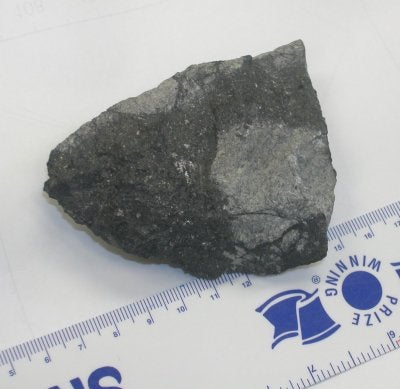Around midnight on Thursday, March 27, residents of several southern Chicago suburbs were woken up by explosions and crashes. Moments earlier, others who happened to be outdoors in Illinois and neighboring states witnessed a bright meteor exploding overhead, illuminating the sky.
The early morning display of noise and light was produced by a small asteroid that entered Earth’s atmosphere and broke apart over the Midwest, showering dozens of rock fragments upon homes and other buildings approximately 30 miles south of downtown Chicago.
Several meteorites crashed through windows and poked holes in ceilings. Some reportedly stuck cars in the area as well. One 13-year-old boy in Park Forest, Illinois, reports he was awakened when a five-pound rock crashed through his ceiling and rolled across the floor of his bedroom, just feet from where he was sleeping. Nearby, another meteorite shot through the roof of the Park Forest fire department.
Among those startled by the event was Floosmoor, Illinois, resident Lawrence Grossman, a geophysicist who studies meteorites at the University of Chicago. “The explosions woke me up,” he told Astronomy.com. When he looked at his clock, it was “slightly after midnight.”
Although he didn’t see the meteor himself, Grossman reports that it was caught on video. Aired on the local news Thursday evening, the recording shows “a flash followed by a trail of sparks,” he says. One news photographer at the scene of a residential fire south of Chicago also captured photographs of the meteor as it exploded and lit up the night.
In addition to Park Forest, meteorite fragments have been found in other communities from Staeger to the southeast to Olympia Fields to the north, Grossman reports. His University of Chicago colleague Steven Simon, who lives in Park Forest, has been spending a lot of time over the past couple of days at the town’s police station, talking to residents who have brought in meteorites from the fall.
According to the pair, the meteorites are a common type called a chondrite. Grossman reveals that they tend to have dark parts and light parts. The pair has collected small samples of both areas that will be examined at their laboratory and elsewhere. This analysis will determine exactly what kind of chondrite the rocks are, and therefore what kind of asteroid they came from.
Grossman reports that scientists from NASA’s SETI Institute and the University of Western Ontario have contacted him, eager to gather detailed reports from witnesses. If scientists can piece together enough valid accounts of the meteor, they can try to determine the direction it came from and perhaps even the former orbit of the parent asteroid.










